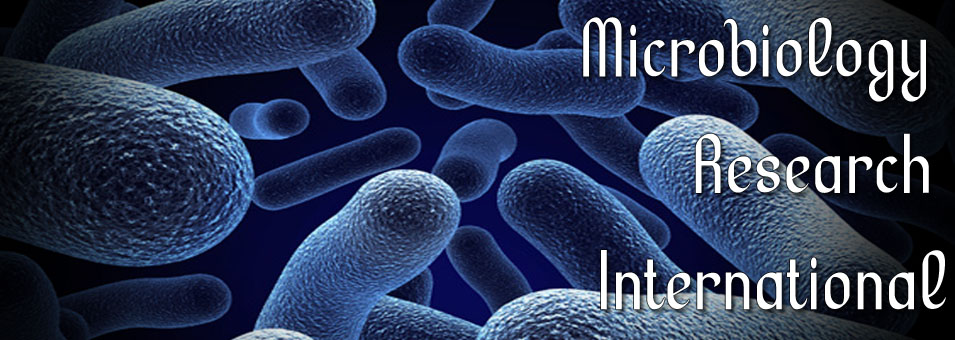Antibacterial activity of nanoparticles of titanium dioxide, intrinsic and doped with indium and iron
Natividad Castro-Alarcón, José Luis Herrera-Arizmendi, Luis Alberto Marroquín-Carteño, Iris Paola Guzmán-Guzmán, Armando Pérez-Centeno, Miguel Ángel Santana-ArandaMicrobiology Research International
Published: November 9 2016
Volume 4, Issue 4
Pages 55-62
Abstract
The need for new antimicrobial compounds has drawn attention on developing new and emerging materials based on nanoparticles with antimicrobial activity. The aim of this research was to evaluate the antibacterial activity of nanoparticles of titanium dioxide, intrinsic and doped with Indium and Iron in Escherichia coli and Staphylococcus aureus. The bacteriostatic effect of Ti02 nanoparticles (two samples), Ti02:Fe and Ti02:In with concentrations of 50, 250 and 500 µg/ml, was observed by optical density measurements. The bactericidal effect was determined by plate count agar Muller-Hinton, where they incubated for 12 h: 50 µl of bacterial suspension (concentration 1.5 × 106 bacterium/ml), con 50 µl of nanoparticles suspended at concentrations between 39 and 2500 µg/ml. Then, to 10-6 dilutions were made and plated on agar for colony counts. There were significant decreases in the bacterial optical densities with respect to control, using TiO2 nanoparticles prepared with different contents of acetic acid at concentrations of 250 and 500 µg/ml versus E. coli and S. aureus. In the plate counts, there was a significant reduction in the number of CFU of E. coli using TiO2 nanoparticles (50% AcAc) in concentrations 39 to 2500 µg/ml; in the case of S. aureus decrease seen in concentrations 78 to 2500 µg/ml. In both bacteria, we observed decreased bacterial growth with TiO2 nanoparticles at concentrations of 156 to 2500 µg/ml. The two variants of preparing TiO2 nanoparticles have higher intrinsic activity against E. coli and S. aureus, while nanoparticles doped with Indium and Iron, could not overpower the antibacterial effect.
Keywords: Titanium oxide, nanoparticles, antibacterial activity.
Full Text PDF
